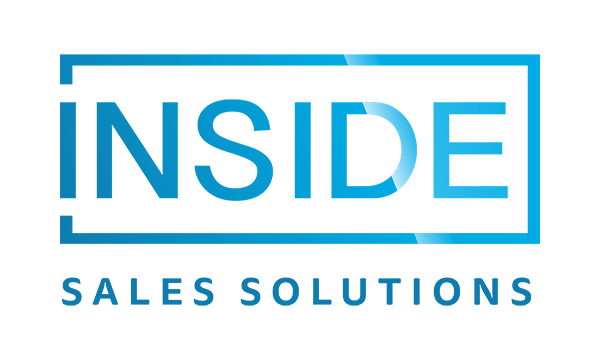Filling your sales pipeline with qualified sales meetings and leads has never been more critical or more challenging. Market competition is fierce, customers have tight budgets, and in-house teams don’t always have the capacity or skills necessary for successful prospecting and outreach.
That’s where sales development representatives (SDRs) come into play. These outsourced top-of-funnel experts work as an internal resource, fully integrated into your sales team, and take ownership of driving pipeline growth.
However, not all SDR efforts are created equal, and here at Inside Sales Solutions, we take a highly specialized approach to SDR excellence. What exactly do we mean?
We’ve identified best practices that help our SDRs authentically connect with prospects and establish successful long-term client relationships.
This article will touch on:
- Which SDR best practices top-performing teams use (like ours here at ISS).
- How to craft messaging that engages prospects and master follow-ups.
- Ways to leverage technology (without losing the human element).
Here are our SDR best practices that fuel definitive success at Inside Sales Solution, which will help you tailor outreach, build trust, and follow up with finesse.
Know Your Audience Inside and Out
It might sound obvious, but it’s not always standard: SDRS need meticulous, expert-level knowledge of the audience they’re prospecting. This is especially true when you’re prospecting in high-stakes industries such as cybersecurity, networking, and IT services, where a lack of knowledge can cause key decision-makers to quickly hang up the phone.
How can you ensure your SDRs have the knowledge to get high-quality leads in the pipeline? Start by crafting well-defined buyer personas, which help SDRs personalize outreach and have deeper conversations.
Gather demographic information, identify job titles, analyze behavioral insights, and incorporate other available data to create detailed personas. And, of course, be sure to understand customer pain points and challenges so that you can speak directly to their needs. You can review case studies, analyze support tickets, and conduct customer interviews.
Craft Messaging That Commands Attention
Prospects receive countless emails, calls, and inquiries. To stand out and distinguish your solution, SDRs need to craft messages that engage from the first interaction. One way to do that is with personalization.
Studies show that over 70% of customers expect companies to deliver personalized interactions, and over three-quarters get frustrated when this doesn’t happen. Whether through emails, calls, or social touchpoints, go beyond using your prospect’s name and demonstrate that you’ve done your homework.
For example, mention shared connections, reference recent company news, or speak to their industry-specific pain points.
What are some attention-grabbing subject lines or opening hooks you can use? Here are some examples:
- Saw [company name] just made headlines for [recent news]. I have an idea you might be interested in.
- [First name], do you need help with [pain point] in your role?
- Ways to streamline [specific workflow] at [company name] today.
- [Name], you’re not alone—many [industry] decision-makers deal with this.
Master the Follow-Up Without Being Pushy
As any seasoned sales professional knows, persistence is vital to successful outreach. Studies show that 80% of sales require several follow-up calls.
Further data shows that buyers actually want to receive multiple follow-up phone calls before a company gives up. However, it’s important to avoid coming off as pushy or aggressive. Mastering the art of following up is one of our top SDR best practices.
The key to effectively following up is understanding how to avoid being too aggressive while keeping the conversation going and weaving value into your follow-ups. For example, space out your touchpoints strategically and consistently seek to add new information or data.
You can also use empathy to connect: Understand that your prospects are busy and may not respond immediately. Use empathy to break the fourth wall and address their bandwidth.
For example, you can say, “Hey, I know you’re busy, but I came across this new report and how it addresses [pain point]. Let me know if you’d like a copy.”
Build Trust Through Consistency
A great SDR shouldn’t just be focused on hitting quotas; they should be dedicated to building relationships. If SDRs are only laser-focused on quotas, their approach can seem insincere or hollow and might result in pushing prospects away.
Instead, SDRs should focus on building meaningful relationships. Interactions should be value-driven and consistent in tone, messaging, and timing to build trust and credibility. When prospects see you’re reliable, skillful, and genuinely interested in helping them, they’re far more likely to engage and eventually convert.
Leverage Technology Without Losing the Human Touch
Technology is vital for providing service at scale in today’s market, and customers have come to expect the level and speed of service offered by technology. However, deploying technology while still preserving the human touch is essential.
One idea: SDRs can tap into powerful sales tools (such as CRMs and email automation tools) to scale outreach with authenticity. For example, they can pair the data and insights in the CRM with the flows available in email automation tools to ensure all touchpoints are hit in a way that speaks directly to the customers.
Keep in mind that technology should enhance, not replace, genuine human interactions. Don’t think of the technology as doing the jobs for your SDRs; instead, think of it as a secret weapon that helps them excel in their efforts.
Stay Coachable and Always Be Learning
Up next on our list of SDR best practices: ensure your SDRs are constantly learning and improving. SDRs operate in fast-changing industries, using cutting-edge tools and new practices. Because of this, they must remain in a state of continuous improvement and skill development.
Experts say skills are quickly disrupted today, and customer expectations are higher than ever. Therefore, SDRs need to participate in ongoing skill development.
At Inside Sales Solutions, our SDRs constantly improve their tactics and approach. They review calls regularly, attend training sessions, and embrace mentorship with other experts to nurture their skills and refine their work.
Celebrate Wins—Big and Small
Although acknowledging wins might not seem essential to team outcomes, research shows that it can help SDRs thrive. Employee recognition can improve everything from team morale and productivity to customer satisfaction.
For SDRs, celebrating wins of all sizes can help boost their confidence, enhance morale, and empower them to build momentum. Here at ISS, we know that success in the entire sales process development is built on persistence, effort, and continuous improvements. That’s why we’re sure to acknowledge SDR victories (even seemingly small ones).
How exactly can you celebrate team wins? Consider shouting SDRs in team meetings (recognizing top performers and strong efforts), tracking metrics, celebrating milestones, and highlighting achievements in internal newsletters and Slack channels.
Making SDR Excellence a Team Priority
Achieving a pipeline full of strong leads requires seasoned SDR experts who tap into strategic guidance and data-driven insights. By leveraging these SDR best practices and knowing how to hire skilled SDRs, our teams can build relationships with prospects, have value-driven conversations, and eventually close more deals.
Ready to take your SDR strategy to the next level? Connect with Inside Sales Solutions for more SDR tips, training, and support, learn more about our outsourcing services, and enhance your SDR strategies.

